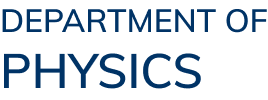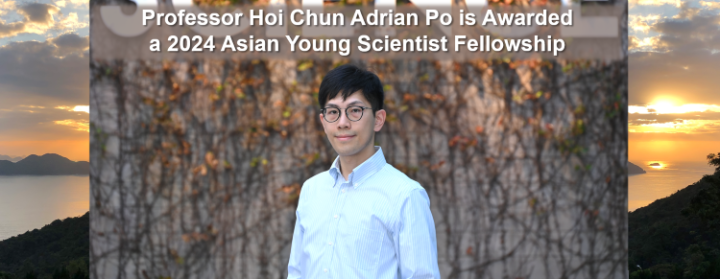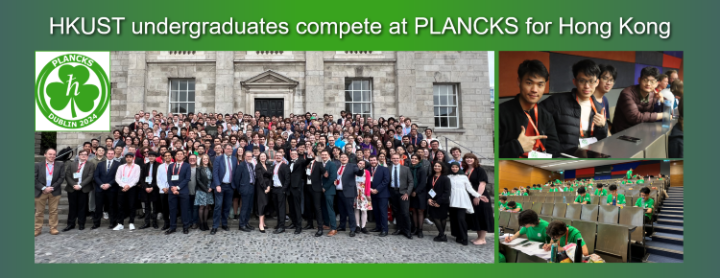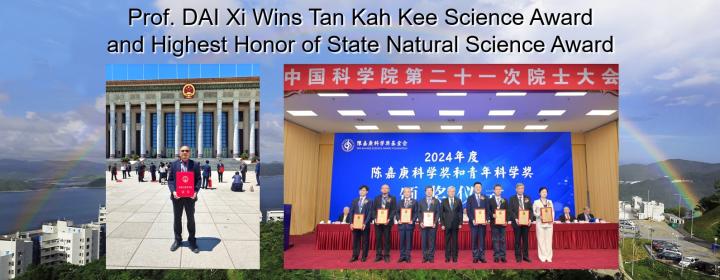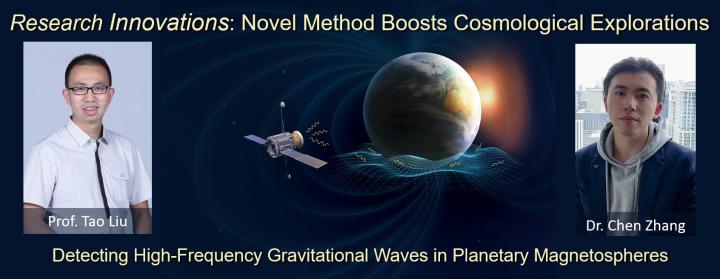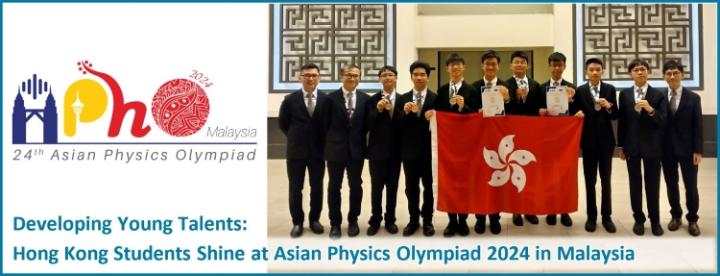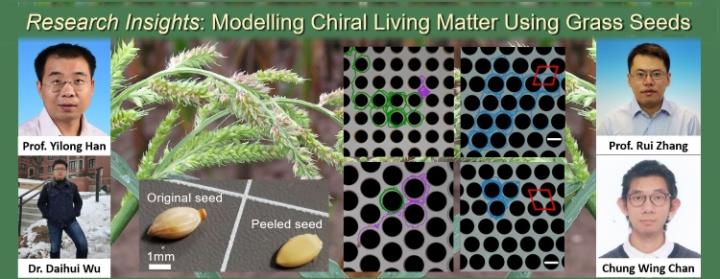News & Events
2024-09-19
A collaborative research team led by Prof. Junwei Liu, Associate Professor in the Department of Physics at the Hong Kong University of Science and Technology (HKUST), and Prof Jinfeng Jia and Prof Yaoyi Li from Shanghai Jiao Tong University (SJTU), has identified the world’s first multiple Majorana zero modes (MZMs) in a single vortex of the superconducting topological crystalline insulator SnTe and exploited crystal symmetry to control the coupling between the MZMs. This discovery, which is published in Nature, offers a new pathway to realizing fault-tolerant quantum computers.
A MZM is a zero-energy topologically nontrivial quasiparticle in a superconductor that obeys non-Abelian statistics, allowing for inequivalent braiding sequences, even though the total number of exchanges is the same (Fig. 1a). This contrasts with ordinary particles, such as electrons or photons, where different braiding always results in the same final state (Fig. 1b). This unique property protects MZMs from local perturbations, making them an ideal platform for robust fault-tolerant quantum computation. Although significant progress has been made in engineering artificial topological superconductors, the braiding and manipulation of MZMs remain extremely challenging due to their separation in real space, which complicates the necessary movements for hybridization.
Fig. 1 Non-Abelian and Abelian exchange statistics. (a) Non-Abelian exchange statistics of MZMs, the final state differs if the order of two pair-wise exchange operations is interchanged. (b) Abelian exchange statistics of ordinary particles such as electrons and photons, swapping the order of the exchange operations will not affect the final state.
This recently published work, reported jointly by the theoretical group at HKUST and the experimental group at SJTU, took a completely different approach to eliminate these bottlenecks by taking advantage of the unique feature of crystal-symmetry-protected MZMs. Leveraging their extensive experience in low-temperature scanning tunnelling microscopy, high-quality sample growth, and large-scale theoretical simulations, the collaborative team demonstrated for the first time the existence and hybridization of magnetic-mirror-symmetry-protected multiple MZMs in a single vortex of the superconducting topological crystalline insulator SnTe. Furthermore, the MZM hybridization could be manipulated using controlled methods that do not require real space movement or strong magnetic fields (Fig. 2).
The experimental group at SJTU observed significant changes in the zero-bias peak, a strong indicator of MZMs, in the SnTe/Pb heterostructure under tilted magnetic fields (Fig 2a-b). The HKUST theoretical team subsequently performed extensive numerical simulations that unambiguously demonstrated the anisotropic responses to tilted magnetic fields indeed originate from crystal-symmetry-protected MZMs. By utilizing the kernel polynomial method, they successfully simulated large vortex systems with hundreds of millions of orbitals, enabling further exploration of novel properties in vortex systems beyond just crystal-symmetry-protected MZMs. This joint research led by Profs. Liu, Jia, and Li opens a new frontier for detection and manipulation of crystal-symmetry-protected multiple MZMs. Their findings pave the way for the experimental demonstration of non-Abelian statistics, and the construction of new types of topological qubits and quantum gates based on crystal-symmetry-protected multiple MZMs.
Fig. 2 Signatures of crystal-symmetry-protected MZMs. (a, b) Spatially resolved tunnelling conductance spectra in tilted magnetic fields. (c-h) Simulated local density of states for vortex states in tilted magnetic fields.
This groundbreaking work was published in the article Nature 633, 71 (2024) titled “Signatures of hybridization of multiple Majorana zero modes in a vortex” with Prof. Junwei Liu (HKUST), Prof. Yaoyi Li (SJTU), and Prof. Jinfeng Jia (SJTU) as corresponding authors and Mr. Chun Yu Wan (HKUST), Dr. Tengteng Liu (SJTU), and Dr. Hao Yang (SJTU) as the co-first authors. The work was supported by the Ministry of Science and Technology of China, the National Natural Science Foundation of China, the Strategic Priority Research Program of Chinese Academy of Sciences, the Science and Technology Commission of Shanghai Municipality, the Innovation program for Quantum Science and Technology, the China National Postdoctoral Program for Innovative Talents, and the Hong Kong Research Grants Council.
Read more
2024-08-29
Congratulations to Hari Harilela Assistant Professor of Physics Hoi Chun Adrian Po, who was awarded a prestigious Asian Young Scientist Fellowship (AYSF). The AYSF scheme aims to encourage and support young scientists in Asia to carry out creative and transformative research in the fields of Life Science, Physical Science, and Mathematics and Computer Science. Prof. Po is a condensed matter theoretical physicist. His interests broadly lie in the collective phenomena that arise when a large number of quantum particles interact and the intriguing interplay between symmetry, topology, and locality that can arise in quantum materials.
Prof. Po joined HKUST as an Assistant Professor of Physics in 2021. After obtaining his bachelor’s degree from the Chinese University in 2013, Prof. Po received an M.A. from the University of California, Berkeley and graduated from Harvard University with a Ph.D. in 2018. He was a Pappalardo Postdoctoral Fellow at the Massachusetts Institute of Technology following his graduation until he joined HKUST.
Read more: School of Science News
Read more
2024-08-06
PLANCKS“Physics League Across Numerous Countries for Kick-Ass Students” is an annual international theoretical physics competition for undergraduate and master’s students that is overseen by the International Association of Physics Students (IAPS). This competition brings together teams of three to four students during a three-day conference for intense competition and a programme of social, cultural, and educational events.
Following their selection to represent Hong Kong by excelling in a preliminary round of competition organized by the Physical Society of Hong Kong, a team of students studying physics at HKUST participated in the international finals of the PLANCKS competition that was hosted by the Institute of Physics at Trinity College Dublin, Ireland on 23-27 May 2024. The members of the team, who chose to the moniker “Non-renormalizable Theorists”, were Kwan To CHAN (year 4), Ching FONG (year 3), Xuan Tan NGUYEN (year 4), and Dao Cong Minh TRANG (year 2). The Non-renormalizable Theorists proudly placed 10th among 48 seasoned teams from 28 countries and regions in Europe, Asia, North and South America that participated in PLANCKS this year.
The accompanying photos show the (i) the PLANCKS organizers and participants, (ii) the HKUST team solving problems in the competition venue, and (iii) the HKUST physics students who comprised the team (left to right): Xuan Tan Nguyen, Kwan To Chan, Dong Cong Minh Trang, and Ching Fong.
Additional links:
PLANCKS press release
X (formerly Twitter): @PLANCKS_UK_IRE
LinkedIn: @plancks-uk-ire
Instagram: @plancks24
Facebook: @PLANCKS2024 Read more
PLANCKS press release
X (formerly Twitter): @PLANCKS_UK_IRE
LinkedIn: @plancks-uk-ire
Instagram: @plancks24
Facebook: @PLANCKS2024 Read more
2024-07-31
Five talented secondary school students from Hong Kong had outstanding results at the 8th European Physics Olympiad (EuPhO 2024) held in Kutaisi, Georgia from 15-19 July 2024 and hosted by the Kutaisi International University. The Hong Kong EuPhO team members were Hayden Cheng (Baptist Lui Ming Choi Secondary School), Edison Fu (Queen's College), Hui Pok-shing (Queen Elizabeth School), Qiao Lok-hei (St. Paul's Co-educational College), and Yeung Yeung (St. Mark's School). Competing among 256 students from 54 countries and regions, the team members won four gold medals (Cheng, Fu, Qiao, Yeung) and one silver medal (Hui). With these outstanding individual performances, the team ranked 2nd among all the teams at the competition. The team was trained and mentored this year by Prof. Man Fung Cheung, Prof. Yilong Han, and Dr. Ting-Pong Choy of the HKUST Department of Physics, with the support of the Education Bureau and the Hong Kong Academy for Gifted Education.
The HKUST Department of Physics has been providing training to about 90 secondary school students to prepare for various regional (Asian, European, Pan-Pearl River Delta) Physics Olympiad competitions and the global International Physics Olympiad dating back to 2003. The year-long training program offered to these gifted students covers a wide range of topics, from Newtonian mechanics to modern physics, both in theory and experiment. The students who are eventually chosen to represent Hong Kong at competitions earn their selection based on their performance in a series of selection tests and competitions during their training. Participation in Physics Olympiad training and at formal competitions develops students’ potential and serves as a springboard for pursuing interests in physics and many other subjects at top universities and beyond.
Accompanying photo (left to right): Dr. Ting Pong Choy (HKUST), Edison Fu (Queen's College), Yeung Yeung (St. Mark's School), Qiao Lok-hei (St. Paul's Co-educational College), Hui Pok-shing (Queen Elizabeth School), Hayden Cheng (Baptist Lui Ming Choi Secondary School), Prof. Yilong Han (HKUST), Mr. Cheung Shi (Sing Yin Secondary School).
Press release:
The Government of the HKSAR press release (Chinese)
The Government of the HKSAR press release (English) Read more
The Government of the HKSAR press release (Chinese)
The Government of the HKSAR press release (English) Read more
2024-06-12
Eight talented secondary school students from Hong Kong achieved excellent results at the 24th Asian Physics Olympiad (APhO 2024) held in Malaysia from 3-10 June 2024. The Hong Kong APhO team members were Chan Hoi-chi (Hong Kong Chinese Women's Club College), Edison Fu (Queen's College), Leung Chi-fung (Evangel College), Liu Lincoln (Sha Tin College) Matthew Mui (The Hong Kong Sze Yap Commercial and Industrial Association Wong Tai Shan Memorial College), Marcus Poon (Po Leung Kuk Choi Kai Yau School), Michael Tang (St. Joseph's College), and Yan King-yiu (Queen Elizabeth School). Competing among over 200 students from 27 countries or cities, the team won one gold medal (Liu), three silver medals (Leung, Fu, Yan), two bronze medals (Mui, Tang), and two honourable mentions (Chan, Poon), and was ranked 8th among all teams at the competition. The team was trained and mentored this year by Dr. Ting-Pong Choy, Prof. Adrian Po, and Prof. Jensen Li of the HKUST Department of Physics, with the support of the Education Bureau and the Hong Kong Academy for Gifted Education.
The HKUST Department of Physics has been providing training to about 90 secondary school students to prepare for the Asian Physics Olympiad since 2007 and the International Physics Olympiad since 2003. The year-long training program offered to these gifted students covers a wide range of topics, from Newtonian mechanics to modern physics, both in theory and experiment. The team members that eventually participate in the APhO and IPhO competitions are chosen based on their performance in a series of selection tests and competitions during their training. The Hong Kong teams under the mentorship of the Department faculty were awarded an aggregate of 148 gold, silver and bronze medals in APhO and IPhO competitions up to and including 2024. Participation in Physics Olympics training and competition develops students’ potential and serves as a springboard for pursuing interests in physics and many other subjects at top universities and beyond.
Accompanying photo (left to right): Mr Yu Kam Fung (Tak Nga Secondary School), Dr. Ting-Pong Choy (HKUST), Liu Lincoln (Sha Tin College), Matthew Mui (The Hong Kong Sze Yap Commercial and Industrial Association Wong Tai Shan Memorial College), Yan King-yiu (Queen Elizabeth School), Marcus Poon (Po Leung Kuk Choi Kai Yau School), Michael Tang (St. Joseph's College), Chan Hoi Chi (Hong Kong Chinese Women's Club College), Edison Fu (Queen's College), Leung Chi-fung (Evangel College), Prof. Adrian Po (HKUST).
News and announcements:
The Government of the HKSAR press release (Chinese)
The Government of the HKSAR press release (English)
The Standard Read more
The Government of the HKSAR press release (Chinese)
The Government of the HKSAR press release (English)
The Standard Read more
2024-05-22
The structures of biological materials, commonly called “living matter”, such as DNA, proteins, bacterial flagella, and flower petals to name a few, are predominately chiral. However, the origin of the prevalence of one type of handedness over the other in this part of nature remains a mystery, despite knowledge of its existence for hundreds or thousands of years. When living matter self-propel, they also exhibit handedness, a notable example of which is the tendency of bacteria to swim in a circle near a surface. Therefore, understanding how self-propelling or active chiral living matter self-organize, navigate, and transport in complex environments will help us decipher the mechanisms of living systems. Moreover, identifying and sorting different cells or microorganisms according to their degree of activity and chirality holds great promise for applications such as diagnostics, omics, and drug delivery. However, the interactions between these chiral active matter and their environment are notoriously difficult to examine, which impedes their further study.
Prof. Rui Zhang and Prof. Yilong Han and members of their research groups in the HKUST Department of Physics, Chung Wing Chan, Daihui Wu, Kaiyao Qiao, and Kin Long Fong, explored the intriguing behavior exhibited by chiral active matter using a simple platform with the help of Prof. Zhiyu Yang of the same department. Prof. Han discovered that Echinochloa crus-galli grass seed has chiral surface ridges that give rise to circular or linear motion when it is propelled under the application of external vibrations. Careful studies of the seed particle motion on a vibrating stage performed by Dr. Wu, Mr. Qiao, and Mr. Chan under the guidance of Prof. Han and Prof. Yang revealed that an active Brownian dynamics model can capture the seed dynamics well.
Mr. Fong and Mr. Chan developed a simulation model with Prof. Zhang’s guidance, which they used to examine the dynamics of chiral active particles in an obstacle array that mimics the complex environment of the experiment. Similar to opotaxis of active particles or cells that describes the tendency to move to regions with less dense obstacles, chiral active particles can also migrate according to the obstacle density. Surprisingly, it was found in this work that at certain conditions a particle tends to be trapped in a triangular obstacle lattice but exhibits fast diffusion in a square obstacle lattice with the same obstacle density. Furthermore, this tendency can be reversed by changing the particle chirality. The remarkable ability to differentiate obstacle lattice structure exhibited by chiral particles is not observed for achiral active particles. Interestingly, further studies also revealed that left-handed and right-handed particles exhibit different effective diffusivities in a parallelogram lattice with broken mirror symmetry. Such a difference can be understood by a pure geometric quantity, which was defined to characterize how far a lattice deviates from mirror symmetry. The key simulation findings were confirmed by experiments.
This work demonstrates that the chiral motions of active particles can sense lattice configurations. Therefore, the work facilitates applications of active matter in chirality-based separation and therapeutic delivery, and also paves the way toward novel applications such as using chiral active matter as environmental sensors.
The work has been recently published in Nature Communications 15, 1406 (2024) and highlighted by the Editor in the “Applied physics and mathematics” section. This work is financially supported by the Research Grants Council via no. 26302320 (R.Z.) and no. 16305822 (Y.H.).
This research also highlights research opportunities for outstanding undergraduate (UG) students in the Department of Physics. Mr. Kin Long Fong, who initiated the work, was a student in the elite International Research Enrichment (IRE) undergraduate program at HKUST between 2017 – 2021. He was involved in research projects under Prof. Rui Zhang’s supervision during his final year of UG study and he is now working towards his Ph.D. degree at the Technical University of Berlin. Mr. Chung Wing Chan was the lead author of publication about the work. He initiated the project during his fourth year as a UG student in the Department of Physics and completed the work during his M.Phil. studies in Prof. Zhang’s group. Mr. Chan is now pursuing his Ph.D. degree in the Department of Physics at Kyoto University, where he is focusing on soft condensed matter physics.
Read more
2024-02-20
Congratulations to Prof. Kam Tuen Law for being selected to receive the 2023 Achievement in Asia Award (AAA) Robert T. Poe Prize from the International Organization of Chinese Physicists and Astronomers (OCPA). The AAA is presented annually to a physicist/astronomer (or a team of Physicists/astronomers) of Chinese ethnicity working in Asia who has (have) made outstanding contributions in physics or astronomy.
See the School of Science press release for more information.
Read more
